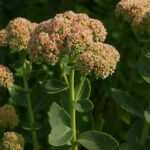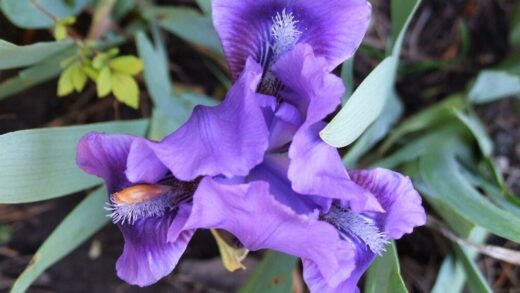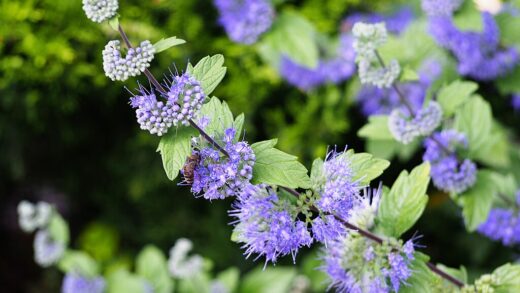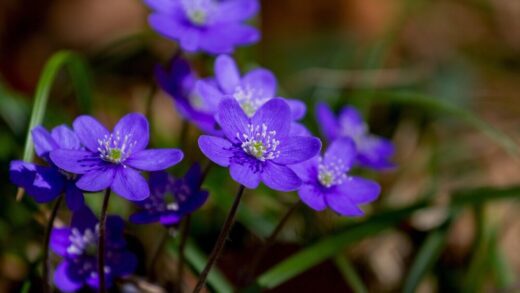While the sweet chestnut is a robust and resilient tree, it is not immune to the challenges posed by various diseases and pests. A vigilant grower must be able to identify the signs of trouble early and understand the appropriate measures to take for prevention and control. The most effective strategy is an integrated one, focusing on creating a healthy growing environment that minimizes stress on the tree, thereby bolstering its natural defenses. Knowledge of the most significant threats, from devastating fungal diseases to persistent insect pests, is the first and most critical step in safeguarding the health and longevity of these magnificent trees.
Major fungal diseases
Fungal diseases represent the most serious threat to sweet chestnut trees worldwide. The most infamous of these is chestnut blight, caused by the fungus Cryphonectria parasitica. This disease was responsible for the near-total destruction of the American chestnut population in the 20th century and remains a major concern for European sweet chestnuts as well. The fungus enters the tree through wounds in the bark and creates cankers—sunken, discolored areas of dead tissue—that expand and eventually girdle the stem or branch, cutting off the flow of water and nutrients and killing everything above that point.
Preventing chestnut blight is paramount, as curing an advanced infection is extremely difficult. The primary prevention strategy is to avoid any unnecessary injury to the tree’s bark, as wounds from lawnmowers, string trimmers, or improper pruning provide easy entry points for the fungal spores. When pruning, it is essential to use clean tools and make proper cuts that allow the tree to heal quickly. In some regions, biological control methods using less virulent “hypovirulent” strains of the fungus, which can infect and weaken the deadly strain, have shown some success in managing the disease.
Another devastating disease is ink disease, caused by a water mold from the Phytophthora genus, primarily P. cinnamomi and P. cambivora. This pathogen attacks the tree’s root system, causing it to rot and turn black. The disease thrives in heavy, poorly drained, and waterlogged soils. Above ground, the symptoms include a general decline in tree health, with small, yellowing leaves, sparse canopy, branch dieback, and often a characteristic dark, inky fluid oozing from the base of the trunk.
The only effective way to manage ink disease is through prevention, as there is no cure once a tree is heavily infected. This begins with rigorous site selection, ensuring the tree is planted in soil with excellent drainage and avoiding low-lying areas where water collects. In areas with heavy clay soil, planting on a mound or a raised bed can help keep the root crown dry. The use of resistant rootstocks, often from hybrid or Asian chestnut species, is the most reliable long-term solution for planting in areas where Phytophthora is known to be a problem.
Common insect pests
Several insect pests can affect the health and productivity of sweet chestnut trees. One of the most significant invasive pests in recent decades is the Oriental chestnut gall wasp (Dryocosmus kuriphilus). This tiny wasp lays its eggs in the vegetative and floral buds of the tree during the summer. The following spring, the hatching larvae induce the formation of galls—abnormal green or pinkish growths on the new shoots and leaves. These galls disrupt shoot elongation and can severely reduce the tree’s ability to produce flowers and, consequently, nuts.
While the galls themselves do not kill the tree directly, a heavy infestation can significantly weaken it and make it more susceptible to other stresses and diseases. Chemical control of the gall wasp is largely ineffective because the larvae are protected inside the galls. The most successful and environmentally friendly method of control has been the introduction of a specific parasitic wasp, Torymus sinensis, which is a natural enemy of the gall wasp in its native Asia. This biological control agent has been highly effective in reducing gall wasp populations and their impact in many parts of Europe and North America.
Other pests that can affect sweet chestnuts include two types of nut weevils, the large chestnut weevil and the small chestnut weevil. The adult weevils lay their eggs in the developing nuts on the tree. The larvae then hatch inside the nut and feed on the kernel, creating the familiar “wormy” chestnuts that are discovered after harvest. Control of these pests can be challenging and often involves a combination of strategies, including orchard sanitation (promptly collecting and destroying all fallen nuts and burrs to break the life cycle) and timing pesticide applications to target the adult weevils before they lay their eggs.
Aphids and spider mites are sap-sucking pests that can also occasionally become a problem, particularly on young or stressed trees. They feed on the leaves, and in large numbers, they can cause leaf curling, discoloration, and a general loss of vigor. Fortunately, in a healthy, balanced ecosystem, these pests are often kept in check by natural predators like ladybugs, lacewings, and predatory mites. Encouraging biodiversity in the garden or orchard is a key strategy for preventing outbreaks. If intervention is necessary, insecticidal soaps or horticultural oils are a less toxic option than broad-spectrum insecticides.
Bacterial diseases and other concerns
While fungal diseases are the primary concern, sweet chestnuts can also be susceptible to bacterial infections, although these are generally less common. One such issue is bacterial blight, which can cause cankers and dieback that may be confused with fungal diseases. Proper diagnosis, sometimes requiring laboratory analysis, is important for correct management. As with fungal pathogens, bacteria often enter the tree through wounds, so careful handling and proper pruning techniques are important preventative measures.
Another condition that can affect sweet chestnuts is root asphyxiation, which is not a disease but a physiological problem caused by a lack of oxygen in the soil. This occurs in heavily compacted or waterlogged soils. The symptoms are very similar to those of root rot diseases: a general decline in health, yellowing leaves, and dieback. Improving soil drainage and aeration is the only solution. This underscores, once again, the critical importance of selecting the right planting site from the very beginning.
Abiotic disorders, which are caused by non-living environmental factors, can also be mistaken for diseases. Sunscald, for example, is an injury to the bark on the trunk and branches caused by intense sun exposure during the winter, which can lead to cracking and peeling. This damaged tissue can then become an entry point for disease-causing organisms. Painting the trunks of young trees with diluted white latex paint can reflect the sun and prevent this type of injury. Similarly, nutrient deficiencies, as discussed previously, can cause symptoms like leaf discoloration that might be misdiagnosed as a disease.
Wildlife can also be considered a type of pest for sweet chestnut growers. Squirrels, deer, wild boar, and jays are all very fond of the nuts and can carry away a significant portion of the harvest if not managed. Deer and rabbits can also cause serious damage to young trees by browsing on the leaves and rubbing their antlers on or chewing the bark. Using tree guards on young trees and, in areas with high animal pressure, fencing may be necessary to protect the investment in the trees.
Integrated pest management principles
An Integrated Pest Management (IPM) approach is the most sustainable and effective way to deal with diseases and pests affecting sweet chestnut trees. IPM is a holistic strategy that combines multiple tactics to keep pest populations below a level that causes economic or aesthetic damage, rather than attempting to eradicate them completely. It prioritizes the least disruptive and most environmentally sensitive methods first, resorting to chemical controls only when absolutely necessary.
The foundation of any IPM program is prevention and cultural control. This involves selecting disease-resistant cultivars and rootstocks whenever possible, preparing the planting site to ensure optimal soil health and drainage, and providing the tree with proper nutrition and water to keep it vigorous and resilient. Maintaining good orchard sanitation by removing and destroying fallen leaves, nuts, and pruned branches can also significantly reduce the overwintering sites for many pests and pathogens.
Regular monitoring and scouting are the next key components. This means regularly inspecting the trees for any early signs of disease or pest activity. Early detection allows for a much more targeted and effective response. For example, physically removing a few gall wasp galls from a young tree as soon as they appear, or pruning out a small branch with a developing blight canker, can prevent a much larger problem from developing later on.
When control measures are deemed necessary, IPM prioritizes biological and mechanical options over chemical ones. This could include encouraging natural predators, using biological control agents like Torymus sinensis for gall wasps, or using traps to monitor and reduce pest populations. If chemical intervention is required, the chosen product should be as specific to the target pest as possible and have the lowest possible impact on non-target organisms, such as pollinators and beneficial insects. The timing of the application is also critical to maximize its effectiveness while minimizing its environmental impact.
Creating a resilient ecosystem
Ultimately, the best defense against pests and diseases is to cultivate a resilient and diverse ecosystem around the sweet chestnut trees. A monoculture, where only one type of plant is grown over a large area, can be very vulnerable to a pest or disease outbreak. In contrast, a more diverse planting, with a variety of other plants, flowers, and shrubs nearby, can create a more stable environment. This is because a diverse landscape provides habitat and food sources for a wide range of beneficial insects, birds, and other animals that act as natural predators for many pests.
Planting flowering species that are attractive to pollinators and predatory insects, such as lacewings and ladybugs, can help to keep pest populations like aphids in check naturally. Avoiding the use of broad-spectrum insecticides is crucial, as these chemicals kill beneficial insects just as effectively as they kill pests, which can disrupt the natural balance and often lead to a resurgence of the pest problem later on. A healthy ecosystem has its own checks and balances.
Soil health is the foundation of this resilient ecosystem. A soil that is rich in organic matter and teeming with a diverse community of beneficial microbes, fungi, and earthworms is better able to suppress soil-borne pathogens and provide a steady stream of nutrients to the tree. Practices like composting, mulching, and avoiding soil compaction all contribute to building this healthy soil food web. A tree growing in healthy soil is a healthy tree, and a healthy tree is far better equipped to defend itself against attacks from pests and diseases.
This ecological approach to tree health requires a shift in perspective from viewing the tree as an isolated individual to seeing it as part of a larger, interconnected system. By working to enhance the health of the entire system, the grower can create an environment where the sweet chestnut tree can thrive with minimal intervention. This is not only a more sustainable and environmentally friendly approach but is often the most effective one in the long run for ensuring the health and productivity of the trees.



















